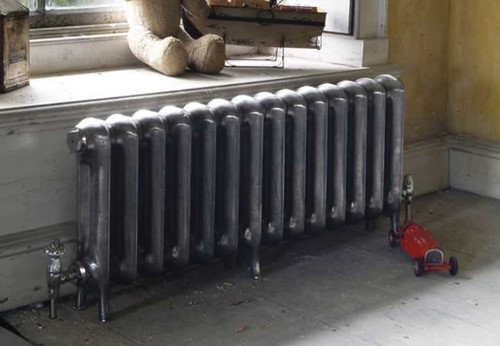Posted: Wednesday, November 18, 2020

Whether you’re overhauling a living room or installing a radiator elsewhere in your home, there are some rules you should be aware of for where to position it.
There is traditional thinking involved - under the window has always been the first choice - but where you place your radiator is all about maximising efficiency. There are lots of considerations for modern homes, so where do you position a radiator?
Trads is here to explain the dos and don’ts as well as how the placement of your radiators has changed…
You need to remember that the position of a radiator affects its efficiency.
The best place for a radiator is in the coldest part of the room. This used to be under windows. However, in more modern double-glazed homes, there may not be a cold area, so you can put radiators where they won’t affect the use of walls. A general rule is to have one radiator for every 4m or so in a room.
If you live in an older home, or remember the home you grew up in, a radiator may be located under a window. In the past, windows were poorly insulated and single glazed, so placing a radiator under the window would help counteract cold air coming inside.
In modern homes, radiators are often still placed under windows as this is an area where you can’t place your furniture - in most cases. If your home has single glazed windows, this may still be the best place to position your radiator as window insulation has improved.
This is because the heat that rises from the radiator will mix with the cold air coming in through the window. Cold air creates better heat conduction - the pushing of hot air from the radiator into the room - keeping the room warmer than if the radiator was placed elsewhere.
In older properties, the pipework for radiators was or will still be found under the windows. As we’ve said, this is because radiators had to be placed here.
However, even though insulation has improved, many homeowners feel it's too difficult or costly to move this pipework so they keep their radiator in the same place. You shouldn’t feel forced into keeping your radiator in its old location. New homes allow you much more flexibility when deciding the best location to install your radiator. Changing the position could free-up valuable wall and floor-space.
Improvements in home insulation has allowed people to place their radiators in various locations, as well as to buy alternative radiators - such as vertical models. Many will still choose to put their radiator below the window, due to available space.
However, there's now a huge range of different radiator types available which can help you utilise the available space you have in all many rooms. If you are short on horizontal space - in a kitchen or bathroom, for example - choose a vertical radiator which will maximise all the available floor to wall space with a smaller footprint.
At Trads, we stock a great range of vertical radiators crafted from steel which will produce excellent heat outputs. You will also find lower radiators that can start from 330mm in height. No matter what you are looking for, there is a size of radiator to fit your needs.
While the location is one thing when it comes to radiators, there are steps you can take to help efficiency. We’ve outlined some points below, but we appreciate some of these cannot be avoided.
We understand that space is at a premium in many rooms but putting a couch in front of a radiator isn't something you should do. This is because it will absorb a lot of the heat from the radiator and prevent proper heat circulation throughout the room. It all means that the radiator will be less efficient and you'll need to turn up your heating for a comfortable temperature - which is wasteful and expensive.
Like placing furniture in front of your radiator, full-length curtains can also stop the heat from circulating around the room by blocking. An easy way of finding this out is if you open your curtains and feel some warmth where your radiator is located. This can be made even worse if you’ve bought heavier curtains or fitted a liner behind them to enhance insulation by preventing heat from escaping through the window.
In especially cold areas, placing the radiator on an exterior wall may reduce its efficiency, since it has to work harder to counter the cold from outside. To avoid this, heat output may be improved when a radiator is placed on an interior wall instead. This is because it can gain additional efficiency from the insulation of the interior walls.
In smaller rooms, a radiator may be located behind a door - maybe through little choice. As radiators move heat around a room through convection, a radiator behind or next to a door shouldn’t be a problem - like windows. However, this all depends on the temperature of the area that the door connects to. Most will lead into a hallway which is usually cold, meaning the heat will go straight to a colder area.
Is it time you updated your radiators? Here at Trads, we have an excellent range of beautiful cast iron and steel radiators to update your home with!
Feel free to contact us if you need any help choosing a radiator
< Back To Blog